Editor’s Note: Sorry I’m not catching up as fast on these as planned! Making up for that by making this one a bit longer than usual. I do know not everyone wants to read about the ports, but many do. The nice thing is, the Ports column is clearly identified, and you’re not required to read anything that’s not to your specific interest, eh? -rc
Guadeloupe
November 22-23, 2024
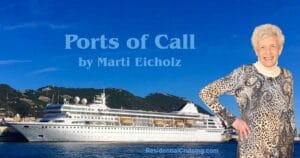 Our ship, The Odyssey, is docked on an island shaped like a butterfly, Pointe-à-Pitre. The westerly wing is Basse Terre, where the land has mountainous volcanic peaks, covered in dense rainforest. The eastern wing, Grand Terre, is almost flat, the most densely populated and covered in white sandy beaches.
Our ship, The Odyssey, is docked on an island shaped like a butterfly, Pointe-à-Pitre. The westerly wing is Basse Terre, where the land has mountainous volcanic peaks, covered in dense rainforest. The eastern wing, Grand Terre, is almost flat, the most densely populated and covered in white sandy beaches.
Guadeloupe was once a French colony and is now officially the poorest Region of France. The currency is the Euro, and French is the official language. Most people know Guadeloupe as the fictional island of Saint Marie, the setting for a TV program, Death in Paradise (107 episodes from late 2011 through a Christmas special coming up this Christmas eve). It is broadcast on BBC One in the United Kingdom, France 2 in France, PBS in the United States, Prime in New Zealand, and on ABC and 9Gem in Australia.
Guadeloupe is noted for its vibrant, colorful atmosphere. It’s often called the “The New Orleans of the Caribbean”, focusing on its rich history, bustling market scene at “Le Marche de a Darse”, the beautiful iron-constructed cathedral, and the unique opportunity to experience local culture through street art, food, and music while exploring the city’s well-preserved colonial architecture.
Pointe-à-Pitre is a small-town capital, with lovely examples of French Caribbean architecture. Wander the streets to get a sense of what local life is like. Discover the traditional and colorful Creole houses, the wooden ones tucked away in the back streets with their application of colorful paint and carefully tended flowers. It seems run down in some ways that adds to its charm.
Walking on, you imagine the elegant lifestyle that existed on the island at the beginning of the 20th century. You see stunning dilapidated colonial mansions, very picturesque with their added vegetation, the first cinema on the island which is now a bar, and a lovely 1930s bandstand. It must have been a Parisian Park.
Marche de la Darse is a popular market on the seafront. A drumming band entertains, while you browse the fruits and vegetables, souvenirs, brightly colored towels, clothes, hats, rum infusions, spices, and fiery hot sauces. A foot-tapping experience.
Visit the Neo-Classical Cathedral, Cathedrale de St-Pierre et St-Paul, attractively painted sand-colored, nicknamed the ‘Iron Cathedral’. Rather than the traditional arches like stone pillars, it is supported by riveted iron girders and uprights. The metal frame construction made popular by Gustave Eiffel, of Eiffel Tower fame, is a method to brace against hurricanes and earthquakes. As cathedrals go, it’s unremarkable. The flower market outshines it.
The Memorial Acta, a world-class museum dedicated to the history of slavery and colonialism, is worth a visit. Hike the largest and still active volcano, the La Grande Soufriere Volcano. Go early to escape the heat and before the clouds move in for the afternoon showers.
Diving and Beaching: There are loads of picturesque beaches, but the most idyllic and most tropical are on the Grand Terre side of the island. Dive in Jacques Cousteau Marine Park. Visibility is great, water temperature is good, and currents are muted, making it a relaxing place to dive.
Food is one of the highlights. Guadeloupe has a hybrid cuisine, blending flavors from African and French roots, as well as being influenced from Asian cultures. Having ample amounts of seafood, fruits, and spices, the Creole food is fantastic. Rum is the drink of choice. Hand cranked ice-cream is amazing, reminding me of my childhood. It is done the old-fashioned way in a wooden barrel, and sold in the streets.
This “butterfly” island is tropical, volcanic, French style, undisturbed natural beauty, and off the beaten path, making it a destination for an unforgettable adventure. Thinking of the “butterfly”, I believe I and my ship family are “butterflies”, breaking out of our cocoons to start a new adventure.
Our ship leaves the port of Pointe-à-Pitre, Guadeloupe, and sails toward St. Johns, Antigua.
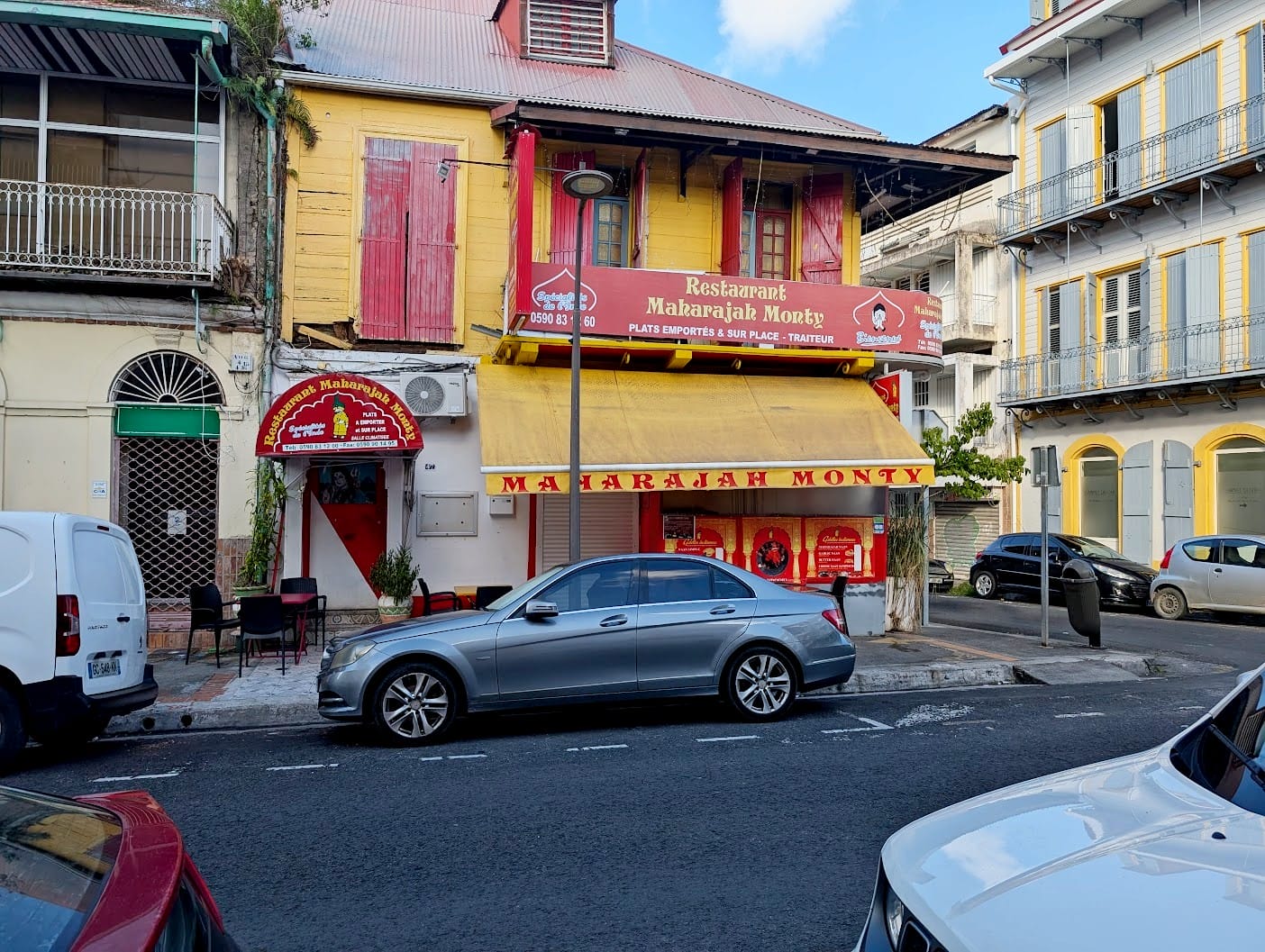
Antigua
November 24-25, 2024
It’s a beautiful, serene Sunday morning, a peaceful and tranquil start to our first day in St. John’s, Antigua, a jewel in the Caribbean. Taking a walk to get my body moving, legs stretched, and mind, ears, eyes alert to the possibilities of a new day. It will also help me find inner calm.
St. John’s is a beautiful little capital city (23,000) and so very easy to explore on your own. But most shops and restaurants are closed: it’s Sunday. The streets are almost devoid of people but there is a sound in the distance, the sound of a church. The music on the wind makes my ears prick up. A joyous Antiguan Congregation loving life is singing their praises. Absolutely gorgeous! What a strange experience to walk around a place so cheerful yet deserted with only the faint sound of a church congregation to remind me that people love life! These moments are pure joy and contentment.
Most of the people in Antigua claim to be of the Christian faith (91%). Several different religious denominations are represented. St. John’s Cathedral, a historical monument, is the largest church on the island and one of the oldest. It is a baroque architectural design and built on a fossil reef. This building is beautiful but also errs on the spooky side. It’s been rebuilt three times after being knocked down by earthquakes.
The imposing structure sitting behind rusting gates seems dusty and not in its greatest state, with an overgrown graveyard directly in front. Its two white towers sit at the highest point of the city. Being located on a hilltop, its panoramic views of the island make it a great landmark. It’s great to soak up the atmosphere.
Antigua is one of the smallest countries on earth. The climate is tropical but the trade winds blowing off the Caribbean Sea and the Atlantic Ocean make it cooler. Antigua has no mountains, no volcanoes, no forests and no rivers, but it does have the largest nesting colony of frigates (family of seabirds) in the Caribbean.
Antigua is one of the Caribbean’s most prosperous nations with an 18% poverty rate. It is famous for its shopping malls as well as boutiques, selling designer jewelry and haute-couture clothing. The colorful buildings, busy bustling streets, and markets are perfect for a slow wander to soak up local life. The shops, houses, and restaurants are the most vivid paintbox colors, with hand painted lettering and pictures on top outlining what they have on sale inside.
The people are warm, open and friendly. It is not unusual to receive a ‘good afternoon’ as you explore. Smells of fresh fruit stands and cooking food emit from every street corner.
Key dishes and drinks: Grilled lobster. Fish whichever way you like it (grilled, pan-fried, steamed, stewed, or baked). Fungi/Cou-cou (corn flour pudding with okra) and fish. Ducana (sweet potato and coconut dumpling) with stewed codfish. Antiguan Black is considered the sweetest pineapple in the world. Rum is the drink of choice. The Lime Food Tour has plenty of food stops and rum tastings.
For history buffs and sightseers alike to explore:
- Fort James is a historical landmark with amazing views, horseback riding, swimming, and beach bars and grills.
- Lord Nelson’s Dockyard in English Harbor is a historical monument and museum. It gives an excellent account of Antigua’s colonial past.
- Shirley Heights Lookout has spectacular views and natural coastal formations, creating a fascinating geological landscape of the island’s natural beauty. A group from the Odyssey partied there with the locals.
- Betty’s Home, a sugar cane plantation established in 1650, became a successful agriculture, industrial enterprise during the slave trade. Now it is an open-air museum.
- Harmony Hall is a restored sugar mill which has a museum and restaurant.
- Antigua is a coral island which gives it a very attractive coastline of pristine milky turquoise and emerald, green water, bright white and pink sand, and unique rock formations.
- The NE coastline has beautiful natural coves, inlets and a sanctuary for natural habitat.
- Antiguans proudly declare they have 365 beaches, one for every day of the year. These beaches are amazing. To appreciate the appeal of Antigua you must spend time in the water. So, kick back and enjoy!
- The most popular is Dickenson Bay, no denying its beauty, but can be crowded.
- Jolly Beach is 15-20 minutes from St. John’s but it’s worth the journey to see the luscious countryside.
- Book a Catamaran Tour, a fun way to spend the afternoon.
- Sting Ray City is where you can get a tour to swim, feed, and spend time with sting rays.
- Canopy Zipline Adventure includes 10 ziplines. The lines go over the treetops, across a gorge and through a corridor with a wooded area.
Our ship chef’s food tells a story of tradition, innovation, and a deep connection to land and sea. Every meal is an adventure. While dining outside on the deck and enjoying tonight’s delicacies, I’m realizing that there are few sights as beautiful as the calm ocean on a warm night.
Setting sail for Basseterre, St. Kitts.
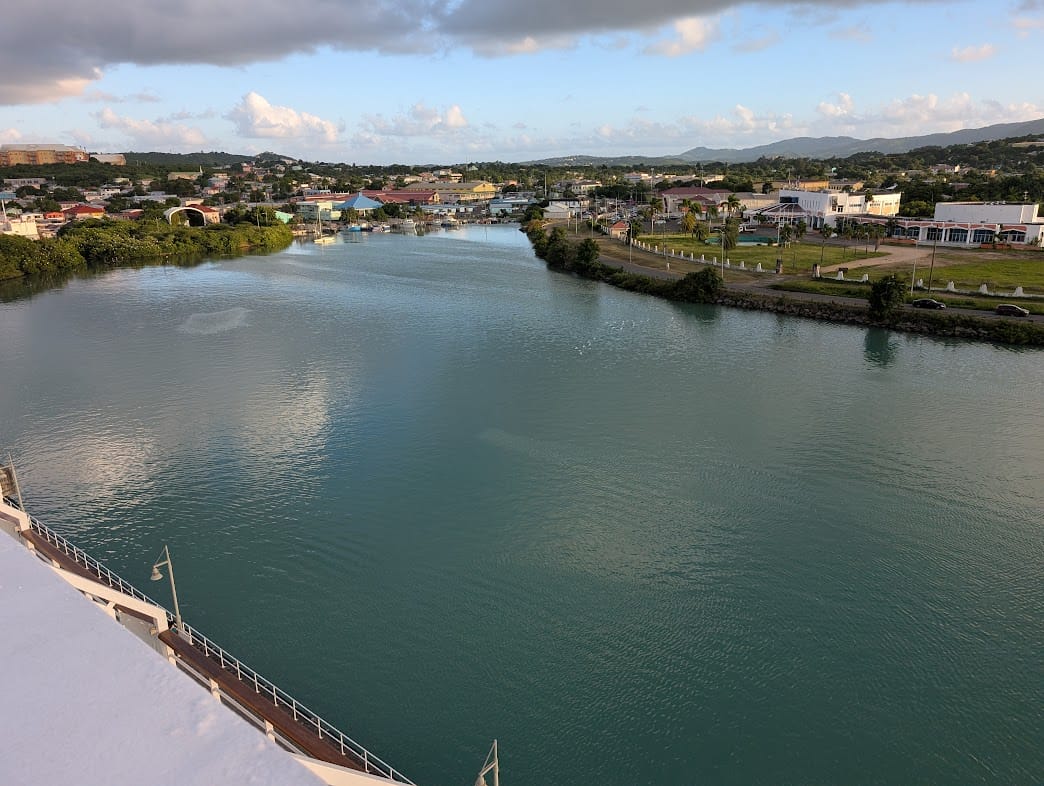
St. Kitts
November 26-27, 2024
The day dawned crisp and clear as The Odyssey docked in Basseterre, St. Kitts. St. Kitts, the first colony in the Caribbean, is considered the “Caribbean Mother Colony”, and became independent in 1983. It’s known for sugar refining and products such as sugar, molasses, cotton, salt, and fruit.
A lush, luxuriant, exotic tropical island nation, St. Kitts is called a “romantic paradise.” This volcanic island is littered with crowd free wonderful beaches, lava formations, ravines, tropical forest, fertile valleys, lagoons, and underwater marvels. A nature lover’s delight!
St. Kitts is home to the Vervet Monkey, introduced to the island 300 years ago. There are more monkeys than humans. Monkeys are out in the fields stealing crops and scampering through branches of roadside trees.
Basseterre, one of the oldest cities in the Eastern Caribbean, is the capital and the largest city of St. Kitts with a population of approximately 20,000. English speaking, and small enough to explore on foot. The town is built around Independence Square, originally used for slave auctions.
Drop by Carribelle Batik to see how batik is made. A gorgeous botanical garden is on the grounds, featuring a breathtaking 350-year-old raintree. You can also spot rare birds and butterflies around the indoor waterfall and Asian-influenced statues. The palm garden contains more than 100 species of palms. It also boasts of orchid, herb, cactus and vine gardens, dotted with sculptures and antiques.
Experience the island by taking a ride on the Sugar Train. It originated in the era of sugar cane plantations and infrastructure was needed to transport sugar. Now you can swing around the island on this double-decker train and get different insights and different facets of St. Kitts from towering volcanic mountains, the Atlantic Ocean on one side and the Caribbean Sea on the other plus beautiful beaches. A beautiful railway journey.
Take a gentle amble on horseback through the countryside, meandering the rainforest and past disused sugar mills and cane fields. Explore Central Reserve National Park, a dense, green jungle, one of the rarest kinds of forest in the world and it’s expanding all the time. Take a four-hour walking tour and hike beneath the canopy of ancient trees, past a waterfall, listen to the sounds of the rainforest and spot all sorts of wildlife, hundreds of flora and fauna species including towering trees and flowering plants. For an adrenaline rush, fly high on a zipline and enjoy a monkey’s eye view of the rainforest as you whizz above the tree canopy.
Climb Mount Liamuiga, an extinct volcano, and be rewarded with epic views of the island’s highest point. Take a peep into ‘Giant’s Salad Bowl’, the foliage-filled mile-wide crater at the summit. This is an energetic thing to do.
History buffs will enjoy Bremstone Hill Fortress, one of the largest forts in the Caribbean. Built from dark volcanic stone, the fort is now home to a museum, a place to soak up the history of St. Kitts and learn about its shady past with France and Great Britain.
The national food is Salt Fish and Dumplings: stewed salt fish, seasoned breadfruit, coconut dumplings, and spicy plantains. The native fruits are soursop (a fruit from a broadleaf, flowering evergreen tree and contains large amounts of antioxidants that protect the pancreatic cells that are responsible for the production of insulin), and breadfruit, both bright green in color. Jerk chicken, spicy curry and roti are also popular. Rum is the drink.
The golf courses are excellent, if you can’t get a tee time then…
- Take to the water: For the sun worshippers there are beautiful golden or white sand and turquoise water beaches fringed with palm trees. The waters are clear and warm.
- Snorkel or Scuba in crystal clear water. Great sites with plenty of tropical fish and sea turtles.
- Water sports abound, such as kayaking, jet skiing, surfboarding, and paddle boarding.
- Visit Nevis by Catamaran (2.5 miles). St. Kitts’ little sister, Nevis is lush and green, and has its own volcano sitting with its head in the clouds.
St. Kitts has heaps of charm and authenticity. Its people are the friendliest around and its chilli sauce packs a punch. Each evening St. Kitts works its magic. Take a few moments to soak up the sunset as the sun dips below the horizon, slowly turning the sky gold, orange and red.
We leave St. Kitts and sail to Philipsburg, Sint Maartin.
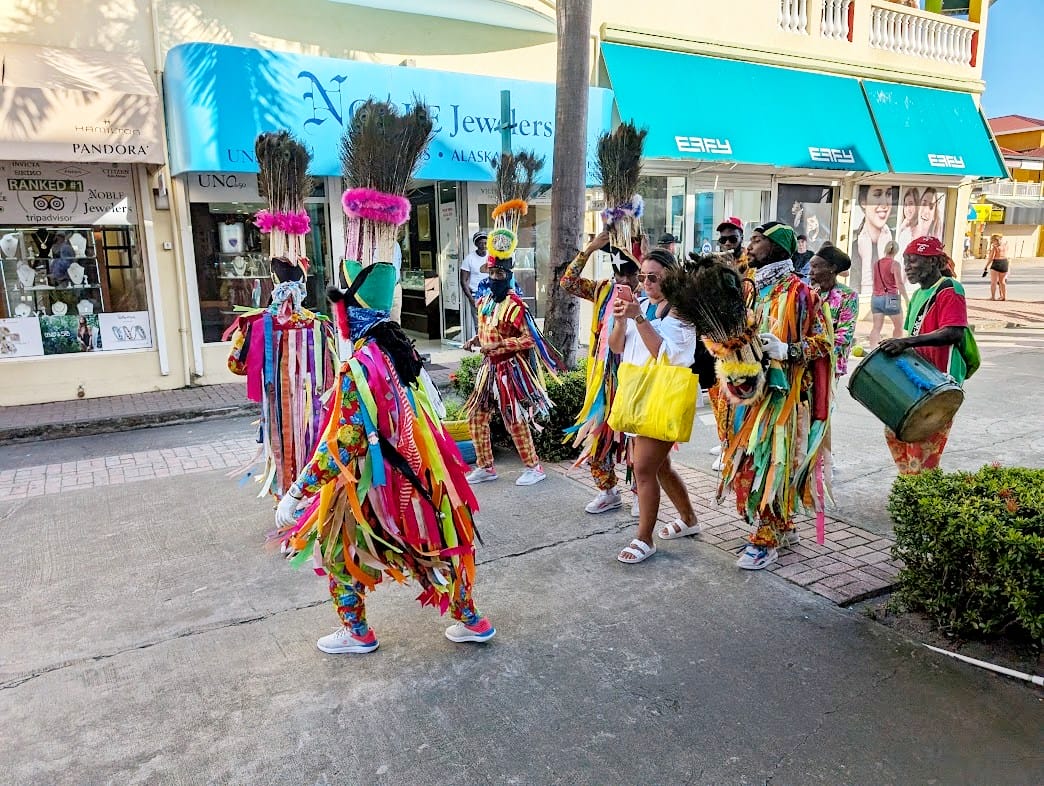
Sint Maartin
November 28-29, 2024
A new sun greets The Odyssey in Philipsburg on a beautiful morning, a day to enjoy life, breathe freely, think, love, and extend gratitude. This cruise port is #1 in the Caribbean and is proving true today when four other large cruise lines dock. The island has nearly 15,000 visitors arriving this Thanksgiving Day.
This is the smallest landmass shared by two nations — a Dutch side, Sint Maartin, and a French side, Saint Martin. The less-developed northern two-thirds of the island is French. This bi-national island boasts of being the longest open border in the world. Any border between the two is not apparent.
The Brown Pelican is the national symbol of Sint Maarten.
Sint Maarten offers a kaleidoscope of experiences to captivate the heart. This 13-square-mile, sun-soaked, magical oasis has 37 pristine, sugary beaches and azure waters, beckoning at every turn.
If you are looking for adventure, dive into crystal, clear waters for snorkeling or scuba diving, zipline through lush rainforest, or tackle the waves with exhilarating watersports like jet-skiing and parasailing.
Philipsburg, a small port town and the capital, has less than 1,500 residents. Less than a mile long, Philipsburg, is filled with vibrantly colored houses, shops, and restaurants. Easy to explore.
Sint Maarten is a hit with shopaholics and bargain seekers, flocking to the duty free and sales-tax free stores selling luxury goods and local merchandise. There is endless shopping to be found on the inner streets.
The Guavaberry Emporium, a small factory where the guavaberry (a red berry that grows in the Caribbean) is made into liquor. Guavaberry Rum is a typical drink made from cane sugar, wild guavaberries from the hills in the center of the island, and spices. It has a woodsy, bittersweet flavor, rather than a guava taste.
Sint Maarten is known as a Gourmet Capital with its 300 fine restaurants, specializing in European cuisine with a Caribbean flair. The National Dish is Conch (a large sea snail) and dumplings, a hot and spicy dish.
The Sint Maarten Museum displays artifacts from the indigenous Arawak people. Originally from Venezuela, the Arawaks are a peaceful people known for their love of music, games, and dance, and detest for fighting.
The Yoda Museum is for all Star Wars fans. The museum is full of Star Wars memorabilia and exhibits from other films. The Sint Maarten Zoo is home to parrots, monkeys, and a playground.
The ruins of 17th century Fort Amsterdam, a historical site where the island’s history and culture can be explored, stands on a nearby peninsula.
‘Great Bay Beach’ is a glorious beach right in downtown Philipsburg. There is a long strip of beautiful white sand and calm, shallow turquoise water.
If not a lover of the sand, there is a paved promenade, known as ‘The Broadwalk’, where you can leisurely stroll alongside the sea without even having to step foot on the beach.
A big favorite is the lively Maho Beach where fellow residents flock to snap photos of incoming jets and marvel at planes of all sizes swooping in over the azure water.
As we sail away into the horizon toward Road Town, Tortola, British Virgin Islands, we bid farewell to Sint Maarten, the Caribbean paradise with the motto, “Always Progressing”.
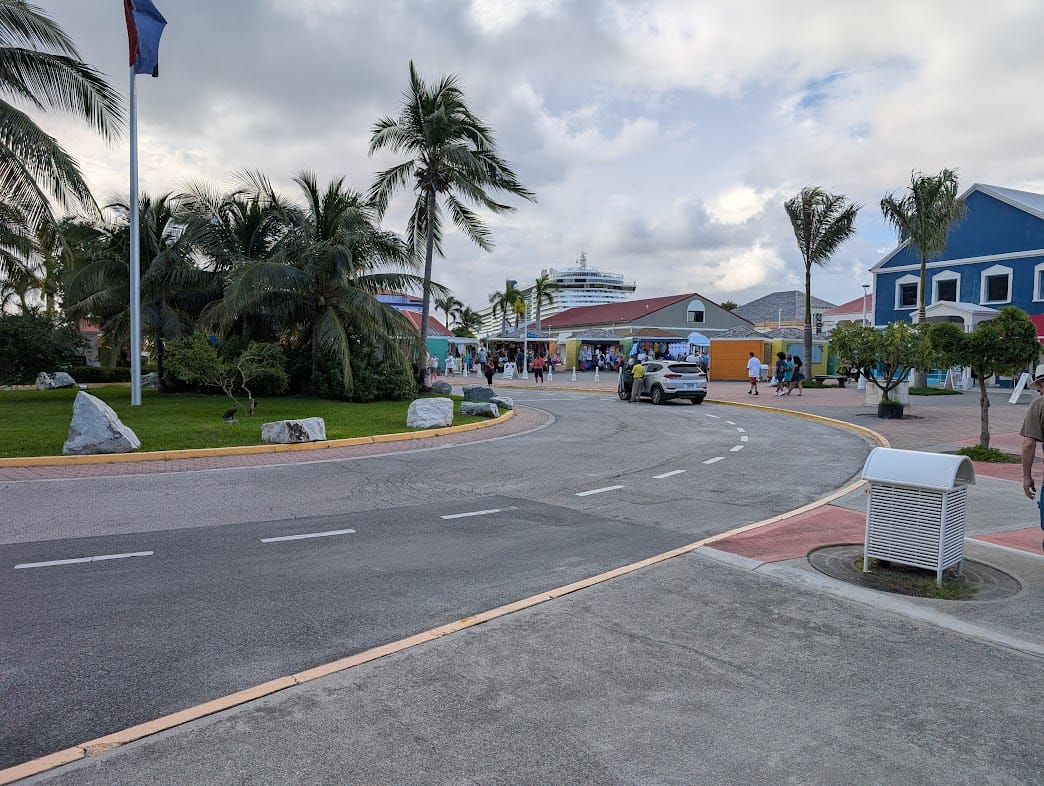
Tortola, BVI
November 30-December 2, 2024
On this cloudy morning with growing patches of blue sky, we are sailing toward Road Town, Tortola, in the British Virgin Islands. A flock of slender brown boobies, gregarious seabirds, are flying low over the ocean and finding resting spots on our ship.
Local legends say that the island was named Tortola by Christopher Columbus and means “Turtle Dove”, but Columbus named the island Santa Ana.
Tortola, the largest of the British Virgin Islands, is not a destination. Wonderful Tortola is a way of life, promising a unique blend of breathtaking natural splendors like stunning landscapes, ranging from pristine shorelines as Cane Garden Bay to lush greenery of Sage Mountain National Park. Life in Tortola offers daily a backdrop of incredible natural wonders to captivate and inspire, whether you sail the clear blue waters, hike through the tropical forests, or simply enjoy shimmering sunsets.
Sailing is a way of life here, and Tortola is referred to as the sailing capital of the Caribbean. For land lovers hiking and mountain biking offer exceptional ways to explore the rugged terrain and amazing coastal paths. Tortola is best known for its stunning white-sand beaches, inviting romantic strolls, cool dips in the shade of gently swaying palms, a vibrant atmosphere and relaxed lifestyle, appealing to adventure seekers and those looking for a peaceful retreat in a beautiful setting. The northern coast has the best beaches, such as Can Garden Bay with its silky stretch of sand and gin-colored waters.
At the port of entry, you see Tortola Pier Park, a massive bustling cruise complex home to 50 shops and restaurants. Stretch your legs and explore the safe and walkable town for more unique and authentic merchandise and cuisine.
Road Town, “The Small Town with a Big Heart”, the charming capital and largest city of the British Virgin Islands, is hugging a horse-shaped harbor and surrounding hillsides. Whether you’re exploring the local markets for creative crafts and fresh produce, enjoying a meal at a harborside restaurant, or simply strolling along the marina filled with yachts and sailboats and enjoying the views, Road Town offers a welcoming getaway into the island life of Tortola.
Road Town is a vibrant hub of activity, offering a unique mix of local and modern amenities and architecture, merging Caribbean style with colonial influences. The town is bustling with shops, restaurants, and businesses, lining the waterfront and creating a lively atmosphere. English is the official language, and the official currency is the U.S. dollar.
Nestled in the heart of Road Town is the 19th century HM Prison Museum, offering a fascinating glimpse into the complexities of justice and society in the islands.
Walk down Waterfront Drive to the very nice Queen Elizabeth II National Park, a great spot for sunrises and sunsets over the Harbor, and watch sea turtles swim offshore. You can also see some free-roaming chickens.
J. R. O’Neal Botanic Gardens features three acres of indigenous and exotic plants, trees, and herbs.
Sage Mountain National Park represents the beginning of conservation in the territory. Its highest point rewards with great panoramic views. There are fourteen trails through a forest looping and creating a circular route.
The Baths at Virgin Gorda is a natural wonder, featuring boulders and caverns that make up a maze, leading to secret rock pools and the famous Cathedral, a natural pool inside a small cave.
Take a hiking tour to Shark Bay National Park, one of the world’s most significant strongholds for the protection of Dugong (a marine mammal related to the manatee), with a population of 11,000. Shark Bay’s beaches teem with wildlife and calm bays.
The National dish in Tortola is quite delicious, Fish and Fungi, made with cornmeal and okra, combined and boiled together with butter and served with salt fish or boiled fish such as cod or mackerel.
From the soft, sandy beaches and rugged mountain vistas to the friendly communities and rich history, Tortola presents an unparalleled living experience and a new adventure around every corner.
Leaving for the Dominican Republic, we realize that Tortola has left an indelible mark on our souls.
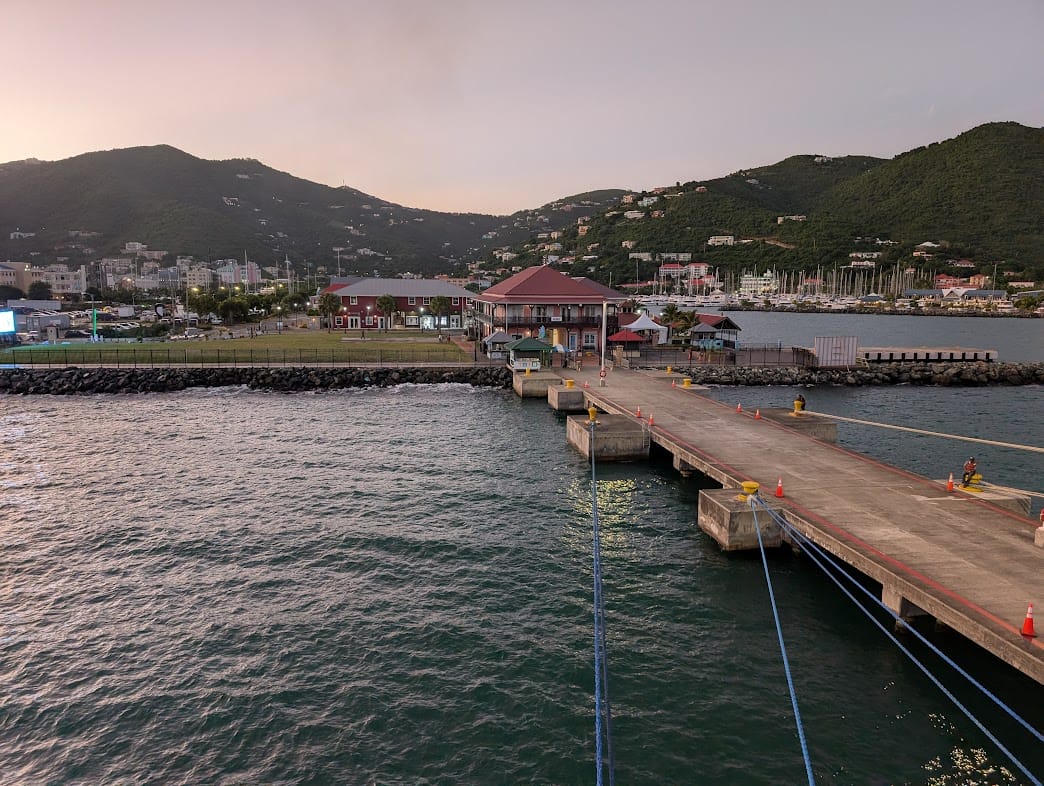
- About the Author
- Latest Posts


Just to clear up a bit of confusion: Basse-Terre and Grand-Terre are 2 separate islands; they are largest islands of Guadaloupe, which is a French Overseas Region. Pointe-à-Pitre is a town on Grande-Terre.
Love these updates!!
Thank you for the travelogue. I enjoy them.
We have been to Sint Maartin, Tortola and St. Kitts but have not had the pleasure of visiting your other mentioned stops. Descriptions you have provided spark an interest to include these places as well. Thank you for taking us along.
—
Thanks for coming! -rc
Fun fact about St. Martin…Dutch side is very conservative and family-friendly. French side is quite liberal, with several topless and clothing optional beaches. Both sides have the friendliest people!!!
—
Sheesh, Alan: NOW you tell me! -rc
Thanks for describing fully the ports. It makes them individual instead of the mixed together similar tourist things that many ports have. So they get melded together. Looking forward to the next instalment.
—
Cool: the 1,000th comment on the site. 🙂 -rc